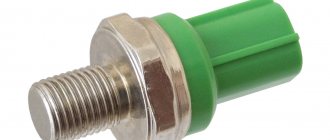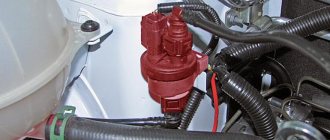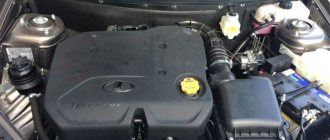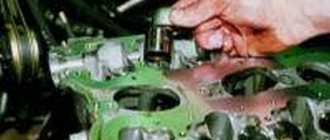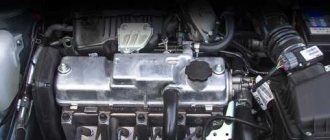If you are designing a cylinder head for maximum power, it will come as no surprise that the main goal is maximum flow. This, among other things, requires the use of larger valves that can be physically installed in the combustion chambers. This requires deciding how best to divide the available space between the intake and exhaust valves. In other words, which is better: a large intake valve and a small exhaust valve, both valves the same size, or a large exhaust valve and a small intake valve? First of all, you might think that a large exhaust valve is the way to go; after all, the exhaust gases undoubtedly occupy a larger volume than the gases drawn into the cylinder through the intake system. However, when it comes to power, another ironclad rule applies: it is easier to empty a cylinder than to fill it. Years of experimentation have shown that the optimal size of the exhaust valve should be approximately 75% of the intake valve, or more precisely, the flow through it should be approximately 75% of the flow through the intake valve. This rule only applies when the diameters of the valves being combined are equal to the total available space in the chamber, i.e. the valves almost touch each other, as is often the case in racing engines. If valve sizes smaller than the maximum are used and power is not the primary goal, then the balance between intake and exhaust flows is not as critical.
The simplest rule to follow is: if the main requirement is power, then follow the normal ratio of 0.75:1. This rule can be changed in cases where the engine is equipped with a turbocharging or nitrous oxide injection system. These systems require greater exhaust flow and can benefit from an exhaust to intake valve ratio of 0.9:1 (90% exhaust flow) or greater.
Unfortunately, installing larger exhaust valves has a pitfall that does not usually involve upsizing the intake valves. The water jacket inside the cylinder head is located next to the exhaust valve seats. This helps keep valves and seats cool, but often prevents valves from being installed at their maximum size. In addition, thin castings and large amounts of heat (a byproduct of high power) can cause cracks in the seats, and this usually shortens the life of the cylinder head.
Comment. When the designer's primary goal is economy rather than power, the exhaust valve size can be increased to a ratio of 0.75:1 even as the intake valve diameter is increased. When the exhaust port flow is increased, the mileage and service life of the engine will be improved. However, there is a limit here, as with everything. Exhaust valves that are larger than 90 to 95% of the intake valve size provide very little additional fuel savings, and since they use the space normally given to intake valves, power potential will be reduced.
The car uses two valves to operate. The first, which admits the fuel mixture into the cylinder, is the intake valve; the other one that releases the recycled air from the engine is the exhaust valve. It is important that these two devices are opened and closed at the right time, no matter at what level the car is moving, then we can talk about the efficiency of the motor.
ICE with one shaft
There are ICE models that allow the cams to act directly on the levers; they are usually small and are also called fingers. In such an internal combustion engine, the valve material is carefully thought out. There are not many components that play a role in opening and closing the dampers. So, in particular, the movement of the car depends entirely on the cams, which directly act on the short parts that open or close the valves.
As you can see, such a system has few technical difficulties, and besides, such a design is light in weight. There are absolutely no rods in it, which act as a pusher and a rocker arm, which is provoked by the pushing device, exerting pressure on it.
The material of the chain, which contributes to the correct positioning of the shaft on the sprocket, affects the fact that it often hangs.
The core solution to this problem will be the need to add several small sprockets, as well as tension on the short chain. They also use straps that are non-stretchable; their material is rubber. Inside each oil belt there are sprockets that help rotate the camshaft and crankshaft.
Double spring
In four-stroke gasoline and diesel engines, the valves are located in the cylinder head. Only a mixture of air and fuel passes through the intake valves, so they are exposed to lower temperatures than the exhaust valves. The inlet valve plate has a larger diameter than the exhaust valve, since the inlet pressure is less than the outlet pressure. Engines of different models differ in the number of valves. Engines with two or more intake valves tend to have better cylinder filling. An additional intake valve increases the flow area of the intake channels, therefore, more air-fuel mixture enters the cylinder. The same applies to the exhaust valves: two valves on the exhaust allow larger exhaust ports, which makes it easier for exhaust gases to exit the cylinder. The valve is subjected to very significant loads even during normal engine operation. To increase the valve's resistance to wear, burning and corrosion, its surface is subjected to special treatment. For example, intake valves are made of steel with chromium or silicon to increase their wear resistance and corrosion resistance, or magnesium and nickel for increased strength. Exhaust valves are made of nickel-based alloys. The valve consists of two parts: a rod and a plate. The valve is installed in a hole in the cylinder head. The plate fits tightly to the saddle. During operation, the cylinder head heats the seat. Some of the heat is transferred to the valve stem, and from it to the guide sleeve, so the stem is the coolest part of the valve. The valve seat and guide are cooled by fluid flowing through the jacket around the intake ports. When opening and closing, the valve rotates at a small angle, so each time it sits in a new place.
Engine having one distributor shaft
There are internal combustion engines that do not have pushrods, so a single type camshaft is used to open and close the valves. This design is called a single camshaft engine. There the valve parts are placed in the head. The design has few moving parts, which is what contributes to its reliability, allowing it to operate even when the vehicle’s speed is at the limit. Moreover, the material from which spare parts are made is metal (special alloy).
For more efficient operation of the motor, there must be free space between the elements - a gap. If there are no clearances between the bolt foot, cam or rocker arm, then the system will wear out, causing serious damage.
It is also worth noting that excessive clearances will cause the valve to open prematurely and close later. Thus, the power of the internal combustion engine will be reduced, and under high valve pressure the operation will be noisier.
If the gap is small, then the pressure will become less, this will lead to the fact that the shutter stroke will become very difficult, thereby the car will lose power.
There are internal combustion engines that operate automatically, adjusting the valves themselves to the desired action. To do this, you need a plentiful amount of lubricating fluid, because it is under its pressure that the valve system will operate.
Number of valves
In the classic version, a four-stroke engine only needs two valves for each cylinder to operate. But modern engines are increasingly demanding in terms of power, fuel consumption and environmental friendliness, so this is no longer enough for them. Because the more valves, the more efficiently the cylinder is filled with fresh charge. At different times the following schemes were tried on engines:
- three-valve (intake – 2, exhaust – 1);
- four-valve (intake – 2, exhaust – 2);
- five-valve (intake – 3, exhaust – 2).
Better cylinder filling and cleaning is achieved by using more valves per cylinder. But this makes the engine design more complicated.
Today, the most popular are engines with 4 valves per cylinder. The first such engines appeared back in 1912 on the Peugeot Gran Prix. At that time, this solution was not widely used, but starting in 1970, production cars with this number of valves began to be actively produced.
Valve mechanism design
As we have already understood, the internal combustion engine ensures that the valves in the internal combustion engine cylinders admit the combustible mixture, if it is gasoline fuel, or air, if it is diesel fuel, and also release them out. Therefore there are two valves, each of which can open or close at its own time under the pressure of the cams.
The pressure exerted on the rods when it touches the cam in an engine that has combustion of a combustible mixture or air mixed with diesel helps ensure that the rod holding the valve, made of high-quality material, has good movement.
The fact that the movement is smooth on the structure with valves indicates the correct material from which the structure is made.
The presence of the necessary gaps in the metal material of the rod part on which the entire structure rests facilitates the rapid opening and closing of the valves. It turns out that thanks to high-quality material, the engine performs better.
Modern engine parts have the right material, which promotes simplicity in design, they cost little, repairs are rarely required, and the reliability of the design is at the highest level. If a breakdown occurs, the parts should be repaired or completely replaced. We are talking about the camshaft, guide bushings, pusher and spring.
Rod and rocker
The first element is a metal tube with a diameter of 12 millimeters.
It serves to transmit the forces that come from the pusher to the rocker arm. The pipe has pressed-in spherical tips. The lower element rests against the pusher heel, the upper element rests against the adjusting screw. The tips also have holes for lubrication. They pass through the pipe cavities to the valve bearings. The rocker arm is designed to transfer forces from the rod to the valve. The element is made of steel. Above the bar, the rocker arm has a short arm. It is longer above the valve. The short one has a lock nut for setting the thermal gap (applies only to mechanical elements). The rod is located on an individual axis. Two bronze bushings are pressed into it.


